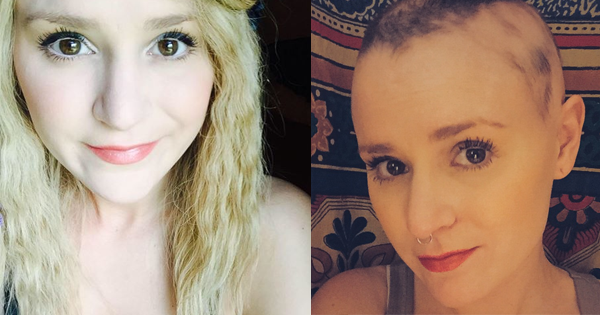Advertisement
Samantha LaMeres was in high school when she started losing her hair.
She had no idea why she was losing her hair, either.

Soon, she was diagnosed with alopecia areata. It’s an autoimmune disease that causes hair loss.
For the first six years after her diagnosis, she says, “It was never really that bad.”
Alopecia starts with just a few circular bald patches, according to the National Alopecia Areata Foundation.
Samantha could cover up her bald patches easily for a while.
However, these small bald patches eventually got worse.

After a while, things got worse. She decided that it was best just to shave her head.
However, this turned out to be a difficult decision.
“I thought I would be emotionally stable enough to wear head wraps and hats confidently, but after quite some time it took a tole [sic] on my self-confidence,” Samantha said.
She looked into wigs to try to make herself feel more normal. However, she discovered the harsh truth.
“During this process, I discovered that they are not cheap…through the grapevine, I found that sometimes you can get insurance to cover wigs if you title it ‘full cranial prosthesis.’ After months of grueling, back and forth, back and forth, communication between my insurance company and me, they finally told me that it was something they would cover.”
Samantha was overjoyed.
But when she went to go order her wig, she was told her insurance company would never cover her wig.
“It’s really easy to get down on yourself when you look in the mirror and don’t have any hair,” she says.
Her hair sometimes grows back in small spurts, and during that time, she still has fun with it.

She can’t afford a wig for herself any time soon, but she’s crowdfunding, and in under a day, she’s almost funded. Hopefully, wigs can become more available for the rest of the 6.6 million people who suffer from alopecia.




